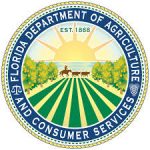
Agriculture Commissioner Nicole “Nikki” Fried and the Florida Department of Agriculture and Consumer Services (FDACS) today announced the award of Hunger-Free Campus designations for 131 schools across Florida. Thirteen of the awarded schools have earned Gold status and will receive $1,000 to fund their continued efforts to improve food access on their campuses. FDACS oversees Florida’s $1.3 billion school lunch program.
“With 850,000 children relying on Florida’s schools for consistent access to nutritious meals, we’re proud to recognize those schools going above and beyond to reduce hunger,” said Commissioner Nikki Fried. “For too many students, school meals are the only meals they receive each day. Hunger-Free School Campuses expand these students’ access to food, improving their health and nutrition. Together, we are working to address chronic hunger and ensure that Florida’s kids get the school nutrition they need to succeed.”
One in six American families suffer from food insecurity, including 2.8 million Floridians and 850,000 children. Commissioner Fried launched the Hunger-Free Campus initiative in late 2019 to encourage schools to implement innovative methods to reduce food insecurity on their campus and in their communities.
The full list of the Hunger-Free Campus designation recipients can be found here. To earn a Hunger-Free School Campus designation, a school must implement at least seven of the best practices below. Schools that have implemented seven practices and have a 70 percent student participation in lunch service are recognized at the Silver level. For Gold-level recognition, schools must have implemented seven best practices and achieved 70 percent lunch participation AND 70 percent breakfast participation.
Teachers, school administrators, and foodservice professionals, students, and parents can learn how their school can become a Hunger-Free School Campus by visiting FDACS.gov/HungerFreeCampus.
Background on the Hunger-Free School Campus Initiative:
To be designated a Hunger-Free School Campus, a school must complete at least seven of the items below:
- 70% Breakfast Participation – At least 70% of students participating in lunch participate in breakfast service annually
- 70% Lunch Participation – At least 70% of students participate in lunch service annually
- Universal Free Breakfast and/or Lunch
- Special Provision Implementation – Participate in the Community Eligibility Provision, or Provision 1, 2 or 3
- Alternative Breakfast – Offer breakfast After the Bell, Breakfast in the Classroom, Second Chance Breakfast
- Share Table – Provide a space for students to place uneaten, unopened food items they don’t want for other students to consume
- Healthy School Team/Local School Wellness Policy – Addresses food insecurity on the school campus
- School Garden – Utilize a school garden to teach students about agriculture, nutrition, and food access
- Food Pantry – Host a food pantry or partner with a local food bank or food pantry
- Backpack Program – Ensure students have enough food during the weekend and school breaks
- Community Education – Provide information to staff and families about local resources available to those that may be food insecure
- Gleaning – Coordinate a gleaning as a team-building event for staff or field trip for students
- Food Drive – Host annual food drive to collect shelf-stable foods to donate to a food pantry
- Summer BreakSpot Sponsor and/or site – Provide meals to children throughout the summer when they don’t have access to the National School Lunch Program
- After-school Snack Program – Ensure students have access to nutritious snacks after the school day has ended
- At-Risk After-school Meals Program – Provide meals during school breaks and during the school year
- Fresh Fruit and Vegetable Program – Participate in the program to provide students fresh fruits and vegetables
